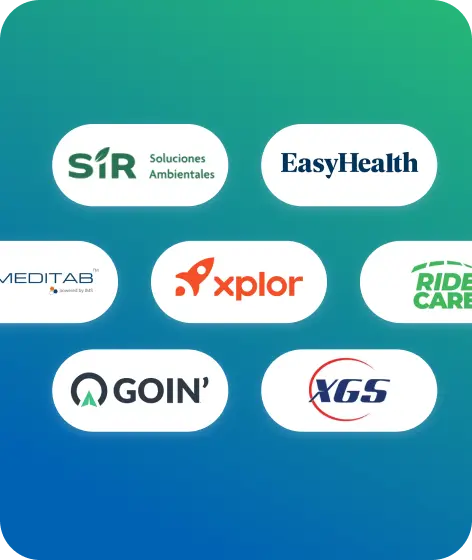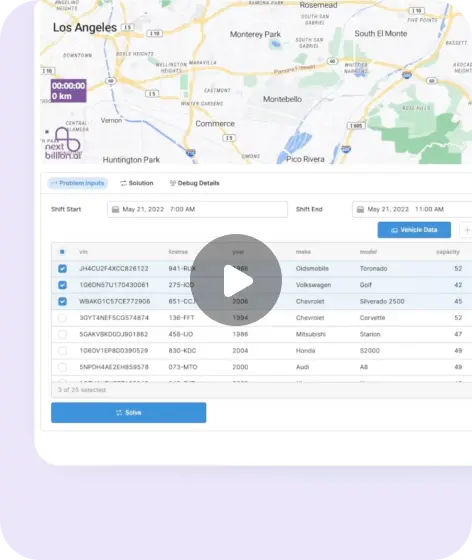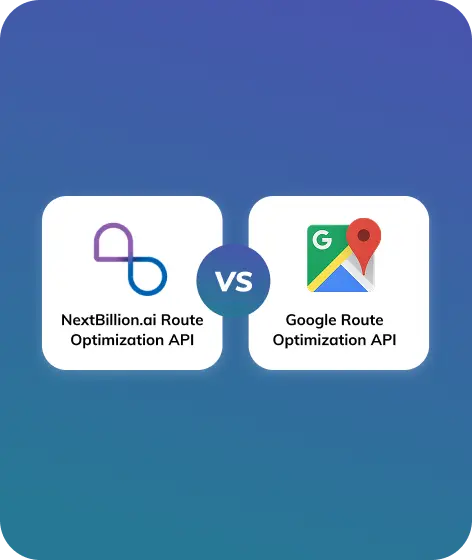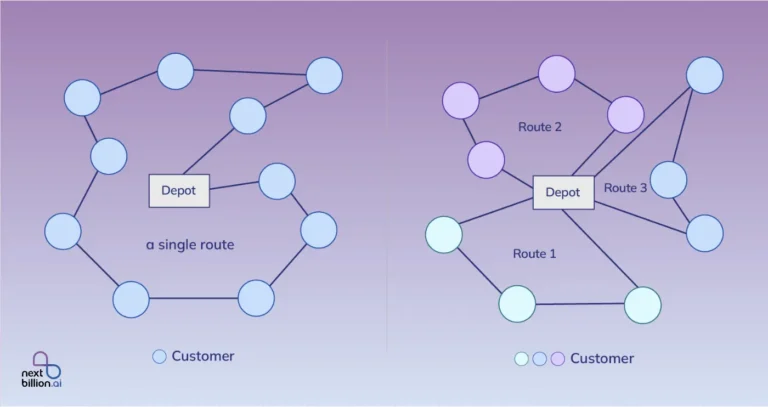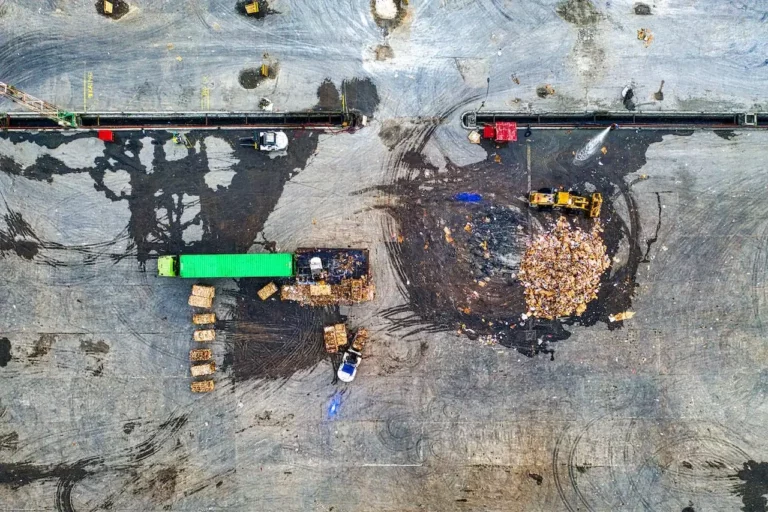
Table of Contents
Are your safety measures aligned with the latest fleet management trends? If not then this is the right place for you. A report by MarketsandMarkets estimated that the fleet management market is set to reach $55.6 billion by 2028 at a CAGR of 14.2%. With this figure, you can understand how crucial it is to align with the new vehicle fleet management trends in 2025 to remain competitive in this technological world.
As advancements in telematics, AI-based analytics, and IoT sensors are coming out all the time and changes in safety regulations, you need to keep up to ensure everyone’s safety. 2025 also comes with new innovative tools like predictive maintenance software, AI-driven driver monitoring systems, and real-time GPS tracking that can help companies to improve their safety compliance, ensuring a robust safety culture to their team.
The fleet management industry needs to adapt to these significant trends and optimize its strategies to make the maximum profit. That’s why in this article, we will explore the top 6 fleet management trends in 2025 and beyond. Keeping with these trends will create an excellent opportunity for companies seeking to innovate and expand their logistics business in the future. Curious about what’s next? Keep reading to know!
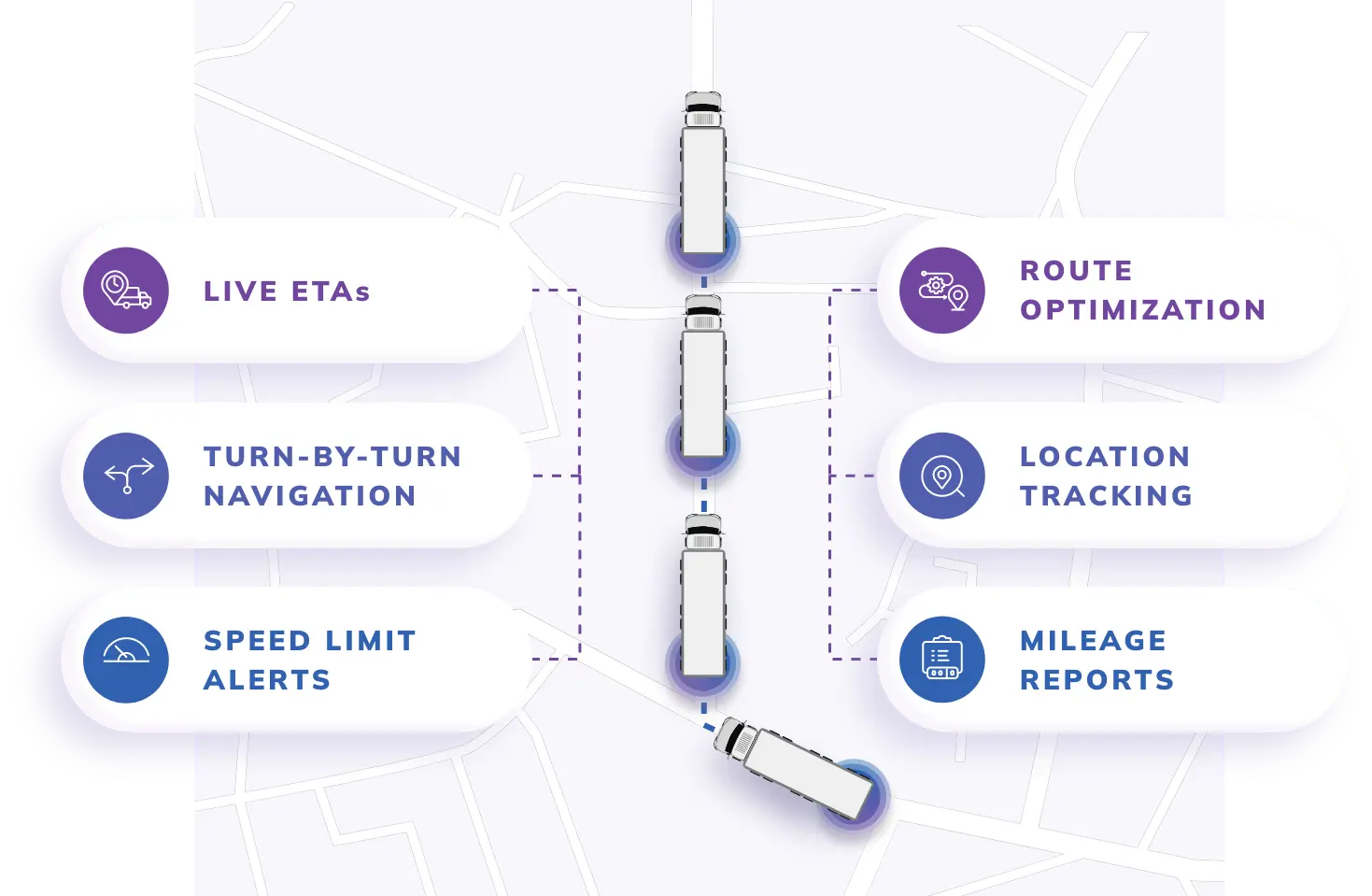
Top 6 Fleet Management Trends in 2025 and Beyond
As the world continues its digital transformation, companies belonging to the fleet management sector need to adopt emerging trends and technologies to tackle modern challenges. Let’s explore the 6 key fleet management trends in 2025:
1. The Shift Toward Sustainability in Fleet Management
Sustainability is becoming a core focus for businesses across various sectors, including fleet management. As environmental concerns rise, companies are adopting electric and hybrid vehicles to reduce their carbon footprint.
By 2025 the shift towards electric vehicles (EVs) is expected to accelerate due to their lower operational costs, advancements in battery energy density, and compliance with new regulations like stricter Euro 7 emission standards.
Adoption of Electric and Hybrid Fleets
The future of fleet technology in 2025 is highly electric. Many businesses with large fleets are transitioning to electric vehicles. This will help them cut operational costs and meet stricter environmental regulations. However, this shift requires careful planning regarding charging station locations, battery swapping solutions, and integrating fleet management software that monitors battery health and range analytics when planning routes.
As EV adoption increases, collaboration between government agencies and private sectors will be essential to develop the necessary public and private DC fast-charging networks. EVs are perfect for urban areas due to easy access to charging stations. Undoubtedly, they cost more to buy at first, but you end up with long-term operational savings due to minimum maintenance requirements (fewer moving parts), regenerative braking systems, and a smaller carbon footprint.
Many businesses are following a phased approach. They start by replacing smaller vehicles with electric models, then gradually transition to large vehicles as technology improves. This strategy helps them adapt to the change while building necessary vehicle-to-grid (V2G) charging infrastructure and incorporating smart grid technology for load balancing.
Impact of Carbon Emission Regulations
Environmental responsibility is no longer optional. With growing public awareness about environmental issues, consumers expect businesses to adopt eco-friendly practices.
Companies are now being rated based on their carbon footprints, influencing consumer choices. Therefore, companies must track and reduce their carbon footprint to meet environmental regulations by following such practices:
Carbon Footprint Monitoring
Fleet management systems will include tools for tracking emissions. This allows businesses to measure their environmental impact effectively. Advanced fleet management platforms now offer real-time CO₂ emission tracking using GPS data, engine diagnostics, and fuel consumption analytics.
Sustainability in fleet management tracking also helps companies to optimize routes for EVs and hybrid vehicles by integrating with dynamic route optimization tools.
Eco-Friendly Practices
Companies will implement sustainable practices throughout their operations, from sustainable procurement of materials to end-of-life vehicle recycling programs. Using biofuels, adopting energy-efficient logistics hubs, and leveraging carbon offset programs are becoming standard practices.
2. Integration of Advanced Technology in Fleet Management
The integration of inventive technology is transforming fleet operations. From AI-powered analytics to advanced telematics, these tools are making fleet management more efficient and data-driven.
AI and Machine Learning in Fleet Analytics

AI and ML in fleet management are revolutionizing how companies handle their operations. These technologies act as intelligent assistants, analyzing patterns and making informative decisions to optimize fleet operations and reduce costs. Here’s how:
- Smart routing algorithms use real-time traffic, weather data, and historical congestion patterns to determine the most fuel-efficient paths.
- Predictive maintenance leverages sensor data and AI models to forecast mechanical failures before they occur, reducing vehicle downtime.
- Driver behavior monitoring systems analyze telemetry data to detect patterns like rapid acceleration, harsh braking, and idle time, providing insights to improve safety and reduce fuel consumption.
- Automated supply chain optimization tools integrate with fleet management systems to synchronize inventory levels with delivery schedules, enhancing efficiency.
- Real-time vehicle tracking combined with AI-driven telematics enables dynamic route adjustments and load balancing.
- Resource allocation tools powered by AI ensure vehicle capacity is maximized, minimizing empty miles and reducing operational inefficiencies.
- Advanced emissions tracking utilizes machine learning to analyze driving patterns and optimize routes for lower fuel consumption, helping fleets meet sustainability targets.
Whether it’s managing supply chains or reducing emissions, AI and ML make fleet operations smoother, safer, and greener.
Telematics for Real-Time Fleet Monitoring
Telematics technology is becoming important in fleet management. Modern telematics systems offer unprecedented visibility into fleet operations. It provides real-time feedback on driver behavior and vehicle fleet management performance.
Driver Safety Monitoring

Telematics systems can track unsafe driving behaviors such as speeding, harsh cornering, excessive idling, and abrupt braking events. This information helps fleet managers improve safety protocols through personalized driver coaching and automated safety alerts.
Integration with Route Planning
Advanced telematics systems will integrate with route planning software, enhancing overall fleet safety and performance. These systems use geospatial analytics and real-time road condition data to dynamically adjust routes, avoiding traffic congestion, roadblocks, and hazardous conditions.
Note: Advanced sensors now provide real-time driver behavior analytics, including fatigue detection through facial recognition and eye-tracking technology. This allows managers to provide targeted training and improve overall fleet performance.
Predictive Maintenance Using IoT
Predictive maintenance powered by the Internet of Things (IoT) is set to revamp how fleets manage vehicle maintenance. Instead of following fixed schedules, autonomous fleet vehicles can now signal when they need repair.
Real-Time Data Monitoring
IoT sensors, including vibration sensors, temperature monitors, and pressure gauges, installed in vehicles can transmit data on engine performance, brake conditions, and other critical systems. This allows for early detection of potential issues, such as abnormal engine vibrations, excessive brake wear, and coolant temperature anomalies. This proactive approach prevents breakdowns and extends vehicle life by addressing issues before they escalate.
Cost Reduction

By addressing maintenance needs proactively, fleets can reduce downtime and repair costs significantly. Predictive algorithms analyze historical data patterns and sensor outputs to determine the optimal time for maintenance, minimizing the need for emergency repairs.
Additionally, cloud-based IoT platforms provide centralized dashboards for real-time fleet diagnostics, helping fleet managers prioritize repairs efficiently.
Focus on Driver Safety and Retention
The cornerstone of successful fleet operations lies in protecting and retaining skilled drivers. Companies should understand this and prioritize driver well-being and safety to ensure efficient fleet operations.
Use of Wearable Technology for Driver Health
The use of wearable technology is on the rise. Fatigue management tools, including in-cab alert systems and AI-powered monitoring, are becoming crucial. These tools can detect signs of drowsiness through eye-tracking sensors, heart rate monitors, and EEG (electroencephalogram) sensors, alerting drivers when they need to take breaks. This technology is vital as fatigue-related crashes cost society approximately $109 billion annually.
Moreover, fleets are adopting wellness programs focusing on physical and mental health, fatigue management, and stress reduction. By 2025, more fleets will implement such programs, leading to improved driver retention and lower accident rates.
Gamification to Enhance Driver Engagement
In 2025, engaging drivers through gamification will be a growing trend. Gamification uses game design elements in non-game settings to boost morale and encourage better performance. Companies incorporate challenges, rewards, and progress tracking to make routine activities enjoyable. Here are some ways gamification helps enhance driver engagement:
- Point-based systems reward behaviors like maintaining optimal speed, reducing idle time, and following safety protocols.
- Leaderboards display real-time rankings based on metrics like fuel efficiency, delivery times, and safety scores, fostering healthy competition and accountability.
- Game-like training modules use augmented reality (AR) to simulate real-world driving challenges, improving knowledge retention.
- Shared goals and team challenges incorporate collective achievements, strengthening team dynamics and camaraderie.
- Telematics-integrated gamification platforms provide real-time feedback, allowing drivers to track their progress and achieve performance targets efficiently.
For example, platforms like SambaSafety and Drivewyze use gamification to encourage safe driving. Offering incentives for safe driving will promote positive behavior, reduce accidents, and build a strong safety culture.
Advanced Training Programs Using VR/AR
The integration of Augmented Reality (AR) and Virtual Reality (VR) in employee safety training is transforming how drivers handle challenging situations safely. These tools improve engagement, reduce accidents, and enhance learning retention through hands-on simulations.
Realistic Simulations
VR headsets and AR glasses create immersive, lifelike training environments for scenarios like machinery handling, adverse road conditions, and unpredictable weather patterns. This enables drivers to practice without real-world risks.
Enhanced Engagement
Immersive environments make training more interactive and memorable, with haptic feedback gloves simulating vehicle controls and force dynamics.
Cost Efficiency
Reduces expenses on physical training setups and minimizes potential workplace incidents. Cloud-based VR platforms allow multiple trainees to participate simultaneously, reducing per-capita training costs.
Customizable Training
Tailored modules address specific workplace hazards and roles, such as hazardous material transport, nighttime driving, or urban delivery logistics.
Instant Feedback
AI-powered analytics provide immediate performance feedback, highlighting areas for improvement and reinforcing best practices.
Remote Accessibility
Employees can train from anywhere, ensuring consistent safety protocols globally through cloud-based AR/VR platforms like Oculus for Business and Microsoft HoloLens.
4. Enhanced Data Security and Cybersecurity Measures

Cybercrime is projected to cost the world $10.5 trillion annually by 2025, and as fleet management systems go digital, robust cybersecurity measures have become essential for protecting sensitive operational and personal data. This will involve various data security measures and technologies to combat cyber risks.
Protecting Fleet Systems Against Cyber Threats
Fleet systems are vulnerable to cyberattacks due to their reliance on interconnected technologies. To protect these systems, companies will implement the following safety measures:
- Access Management: Enforce strict access controls based on the principle of least privilege, allowing only authorized personnel to access critical systems and data. Utilize multi-factor authentication (MFA) and biometric verification for added security.
- Regular Software Updates: Ensure that all software and systems are up-to-date with the latest security patches to protect against known vulnerabilities. Implement automated patch management systems to streamline this process.
- Monitoring and Threat Detection: Implement real-time monitoring tools like Security Information and Event Management (SIEM) systems to identify suspicious activities. Companies can also use AI-driven anomaly detection algorithms to detect and respond to threats proactively.
- Incident Response Plan: Develop a comprehensive incident response plan that outlines procedures for detecting, responding to, and recovering from cyber incidents. Ensure regular cybersecurity drills and simulations to prepare teams for real-world breaches.
- Secure Data Transmission and Storage Solutions: Securing data during transmission and storage is vital for preventing unauthorized access, data breaches, and ensuring compliance with regulations like GDPR, CCPA, and ISO 27001. Key measures include:
- Encryption: Utilize strong encryption protocols such as AES-256 bit encryption for data at rest and TLS 1.3 for data in transit. This guarantees that even if intercepted, the data remains inaccessible without the correct decryption keys. End-to-end encryption (E2EE) ensures data remains encrypted from the sender to the receiver, adding another layer of protection.
- Data Loss Prevention (DLP): Implement DLP solutions to monitor data flow and prevent unauthorized sharing or leakage of sensitive information. Advanced DLP tools use AI to identify anomalies in data access patterns and apply granular policies to prevent data exfiltration.
- Cloud Security Measures: Companies should partner with secure cloud service providers to use security features such as encryption, access controls, and continuous monitoring. Implement role-based access control (RBAC) with multi-factor authentication (MFA) and use geo-redundant storage with automated backup systems to prevent data loss during outages. Additionally, ensure cloud providers comply with SOC 2 Type II and ISO 27017 standards for cloud security.
- Blockchain Technology: Blockchain will ensure data transparency and security by creating immutable transaction records and preventing tampering or unauthorized access. Decentralized ledger technology (DLT) ensures all stakeholders can verify data integrity without a central authority.
5. Growing Role of Mobility-as-a-Service (MaaS)
The future of fleet management trends points towards flexible, service-based solutions that optimize resource utilization and reduce operational costs. Mobility-as-a-Service (MaaS) transforms urban mobility by integrating various transportation modes into a seamless service. It shifts from traditional vehicle ownership to on-demand, subscription-based mobility solutions supported by AI-driven fleet orchestration platforms.
Transition from Ownership to Subscription-Based Models
The transition from vehicle ownership to subscription-based models is a hallmark of the MaaS framework. Users can access vehicles as needed without the burdens of ownership, such as maintenance and insurance costs.
Key Benefits:
- Cost Efficiency: Subscription models reduce financial burdens associated with ownership, including preventive maintenance costs, fleet insurance premiums, and vehicle depreciation tracking.
- Flexibility: Users can choose from various transportation options based on their immediate needs, supported by AI-driven booking platforms and dynamic fleet availability.
- Sustainability: By promoting shared mobility solutions, these models contribute to lower CO₂ emissions, fuel savings, and reduced urban traffic congestion.
- Digital Access: Mobile platforms offer seamless service integration through real-time app-based vehicle reservations, digital payments, and route navigation tools.
Points to Consider:
- Regular Vehicle Maintenance: Subscription services must ensure that all vehicles are regularly inspected and maintained with predictive maintenance analytics and IoT-driven diagnostics to guarantee passenger safety.
- Driver Training Programs: Implement thorough training for drivers, including virtual reality (VR)-based safety training and AI-assisted performance monitoring, to enhance safety standards and customer experience.
Collaborative Logistics to Maximize Efficiency
Collaborative logistics within MaaS involves sharing resources among transport providers to optimize routes and reduce costs. With this approach, companies can enhance efficiency and minimize environmental impact by limiting vehicles.
Key Aspects:
- Shared Platforms: Integrates transportation data across providers using cloud-based logistics hubs and real-time data APIs, reducing empty transport capacity and enhancing route planning algorithms.
- Smart Routing: AI-driven logistics streamline deliveries by integrating real-time traffic data, historical route analytics, and fuel efficiency predictions.
- Eco-Friendly Operations: Encourages shared vehicle fleet management to cut emissions by adopting hybrid and electric vehicles (EVs) for last-mile delivery.
- Stakeholder Collaboration: Enhances coordination among governments, private firms, and consumers through blockchain-based logistics contracts and shared digital dashboards.
6. Emphasis on Fleet Optimization and Automation
AI and automation are revolutionizing logistics by optimizing routes, maximizing vehicle capacity, and improving safety.
Automation in Route Planning and Load Optimization
Route planning and load optimization have evolved beyond simple GPS tracking, with automation reshaping them. AI-driven algorithms predict traffic, weather conditions, and other variables in real-time.
Key Features:
- Traffic Prediction and Rerouting: AI in fleet management predicts congestion using machine learning models trained on historical and real-time data, smartly suggesting better routes to save time and fuel.
- Load Balance Automation: Smart systems ensure optimal weight distribution with IoT-enabled load sensors, reducing vehicle strain and accidents.
- Fuel Efficiency Tracking: Data analytics identify fuel-saving opportunities by monitoring engine efficiency, driving habits, and idle time, minimizing environmental impact.
- Dynamic Decision-Making: Real-time adjustments via telematics-integrated AI systems enable swift responses to unforeseen challenges.
Pro Tip: Regularly update software for reliability, train staff on automation tools, and integrate with telematics for comprehensive monitoring.
Use of Autonomous Vehicles for Specific Applications
Autonomous vehicle (AV) technology is no longer a futuristic concept; it’s becoming a reality in fleet management. While fully autonomous operations are still evolving, semi-autonomous features are already enhancing fleet performance.
Key Features:
- Collision Avoidance Systems (CAS): Utilize LIDAR, radar, and computer vision to detect obstacles and prevent accidents by automatically applying brakes if needed.
- Automated Lane-Keeping Assistance: Uses lane-departure warning systems and steering assist to maintain safe driving practices.
- Adaptive Cruise Control: Maintains a safe distance on highways using radar-based distance sensors.
- 5G Connectivity: As 5G evolves, autonomous vehicles can exchange real-time data with traffic management systems, enabling coordinated navigation and platooning for improved efficiency.
Pro Tip: Deploy AVs in controlled environments initially, monitor performance through telematics dashboards, and conduct routine maintenance to ensure system reliability.
Wrapping Up
Consequently, fleet management in 2025 and beyond holds immense potential for innovation. AI and automation are changing how fleets handle safety and driver engagement. Imagine a future where AI in fleet management offers real-time vehicle diagnostics, driver behavior analytics, and automated post-accident assessments, helping to modify safety programs instantly. Moreover, driver recognition programs use gamified dashboards with AI-driven performance tracking, digital badges, and tier-based rewards to attract and retain drivers. These advanced fleet management trends ensure fleet safety and efficiency while making driving more enjoyable.
Understanding these trends in fleet technology for 2025 will help companies remain competitive in this tech-driven and fast-changing world. Using modern fleet tools and technologies, managers can adapt these trends to optimize fleet performance, costs, and sustainability. More than that, the adoption of AI-powered dynamic route optimization algorithms that consider real-time traffic, weather, and fuel efficiency metrics is expected to rise significantly, and that’s where NextBillion can help you.
NextBillion.ai’s advanced, AI-powered fleet management platform integrates predictive analytics, real-time telematics, and IoT sensor data to boost your business’s operational efficiency. Ready to level up your fleet in 2025? NextBillion.ai has the tools to make it happen, from smart route planning with machine learning models to real-time performance insights via cloud-based dashboards.
Frequently Asked Questions (FAQs)
Fleet management in 2025 will focus on sustainability, automation, and technology integration. Connected vehicle technology using 5G networks and V2X (Vehicle-to-Everything) communication will become standard.
AI-powered route optimization with predictive traffic modeling will enhance efficiency. Real-time management apps will provide managers with remote access to fleet diagnostics, driver safety scores, and maintenance schedules.
Early adoption of autonomous vehicles will begin in controlled environments like warehouses, logistics hubs, and port terminals, where operational conditions are predictable. Some fleets will start testing self-driving trucks on highways with human supervision, supported by LiDAR, radar-based sensors, and 360-degree cameras. This will reduce driver fatigue and improve safety, but regulatory constraints and edge-case scenarios mean fully autonomous vehicles won’t replace human drivers yet.
Electric vehicles (EVs) and hybrid-electric powertrains will make up a larger portion of commercial fleets to meet environmental regulations like Euro 7 emission standards and California’s Advanced Clean Trucks (ACT) rule.
Companies will focus on reducing carbon emissions through AI-driven route optimization, regenerative braking systems, and real-time emissions monitoring.
Green initiatives like carbon offset programs, fleet electrification roadmaps, and eco-friendly procurement policies will become key factors in fleet purchasing decisions.
About Author
Bhavisha Bhatia
Bhavisha Bhatia is a Computer Science graduate with a passion for writing technical blogs that make complex technical concepts engaging and easy to understand. She is intrigued by the technological developments shaping the course of the world and the beautiful nature around us.

